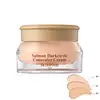What's inside
What's inside
 Key Ingredients
Key Ingredients

 Benefits
Benefits

 Concerns
Concerns

 Ingredients Side-by-side
Ingredients Side-by-side

Silica
AbrasiveSimmondsia Chinensis Seed Oil
EmollientGlycerin
HumectantButylene Glycol
HumectantHelianthus Annuus Seed Oil Unsaponifiables
EmollientSqualane
Emollient1,2-Hexanediol
Skin ConditioningBrassica Oleracea Gemmifera Extract
AstringentSolanum Lycopersicum Fruit Extract
AntioxidantLecithin
EmollientSimmondsia Chinensis Leaf Extract
HumectantLeontopodium Alpinum Extract
Skin ConditioningHydrogenated Lecithin
EmulsifyingPhoenix Dactylifera Seed
Skin ConditioningAscorbic Acid
AntioxidantTromethamine
BufferingDipotassium Glycyrrhizate
HumectantCeramide NP
Skin ConditioningSodium Metabisulfite
AntioxidantSodium Sulfite
PreservativeSilica, Simmondsia Chinensis Seed Oil, Glycerin, Butylene Glycol, Helianthus Annuus Seed Oil Unsaponifiables, Squalane, 1,2-Hexanediol, Brassica Oleracea Gemmifera Extract, Solanum Lycopersicum Fruit Extract, Lecithin, Simmondsia Chinensis Leaf Extract, Leontopodium Alpinum Extract, Hydrogenated Lecithin, Phoenix Dactylifera Seed, Ascorbic Acid, Tromethamine, Dipotassium Glycyrrhizate, Ceramide NP, Sodium Metabisulfite, Sodium Sulfite
Petrolatum
EmollientLanolin Oil
EmollientCaprylic/Capric Triglyceride
MaskingAluminum Starch Octenylsuccinate
AbsorbentParaffin
PerfumingPolyethylene
AbrasiveSorbitan Sesquioleate
EmulsifyingGlyceryl Tribehenate/Isostearate/Eicosandioate
EmollientMicrocrystalline Wax
Emulsion StabilisingTocopheryl Acetate
AntioxidantAscorbyl Tetraisopalmitate
AntioxidantEthylhexylglycerin
Skin ConditioningSalmon Egg Extract
Water
Skin ConditioningGlycerin
HumectantSteareth-20
CleansingN-Hydroxysuccinimide
Skin ConditioningDiacetyl Boldine
Skin ConditioningPalmitoyl Tripeptide-1
Skin ConditioningChrysin
Skin ConditioningPalmitoyl Tetrapeptide-7
Skin ConditioningAlpha-Isomethyl Ionone
PerfumingLinalool
PerfumingButylphenyl Methylpropional
PerfumingPetrolatum, Lanolin Oil, Caprylic/Capric Triglyceride, Aluminum Starch Octenylsuccinate, Paraffin, Polyethylene, Sorbitan Sesquioleate, Glyceryl Tribehenate/Isostearate/Eicosandioate, Microcrystalline Wax, Tocopheryl Acetate, Ascorbyl Tetraisopalmitate, Ethylhexylglycerin, Salmon Egg Extract, Water, Glycerin, Steareth-20, N-Hydroxysuccinimide, Diacetyl Boldine, Palmitoyl Tripeptide-1, Chrysin, Palmitoyl Tetrapeptide-7, Alpha-Isomethyl Ionone, Linalool, Butylphenyl Methylpropional
 Reviews
Reviews

Alternatives
Ingredients Explained
These ingredients are found in both products.
Ingredients higher up in an ingredient list are typically present in a larger amount.
Glycerin is already naturally found in your skin. It helps moisturize and protect your skin.
A study from 2016 found glycerin to be more effective as a humectant than AHAs and hyaluronic acid.
As a humectant, it helps the skin stay hydrated by pulling moisture to your skin. The low molecular weight of glycerin allows it to pull moisture into the deeper layers of your skin.
Hydrated skin improves your skin barrier; Your skin barrier helps protect against irritants and bacteria.
Glycerin has also been found to have antimicrobial and antiviral properties. Due to these properties, glycerin is often used in wound and burn treatments.
In cosmetics, glycerin is usually derived from plants such as soybean or palm. However, it can also be sourced from animals, such as tallow or animal fat.
This ingredient is organic, colorless, odorless, and non-toxic.
Glycerin is the name for this ingredient in American English. British English uses Glycerol/Glycerine.
Learn more about Glycerin